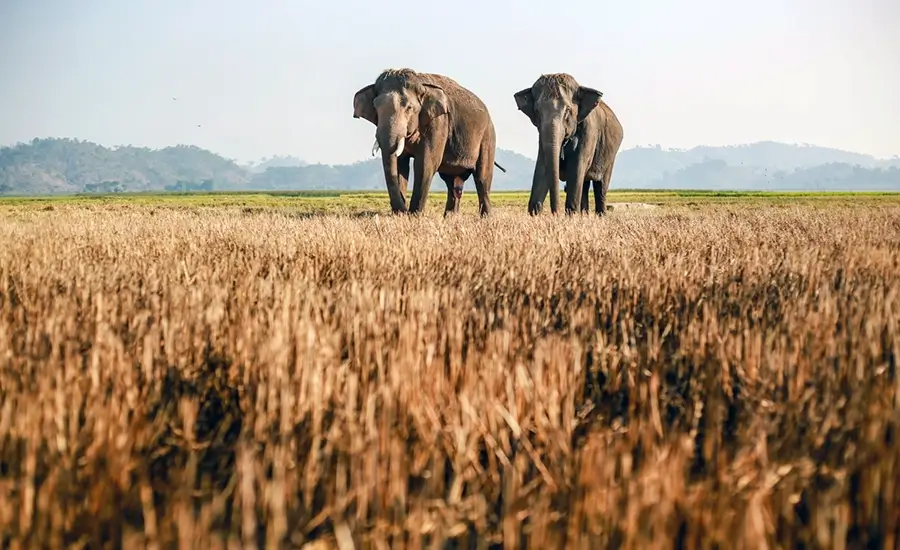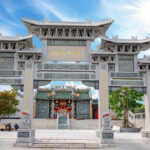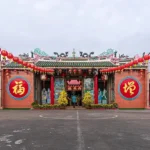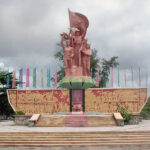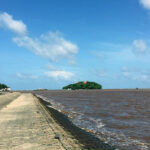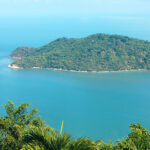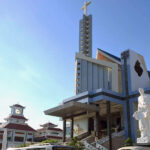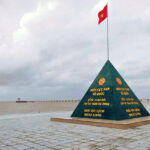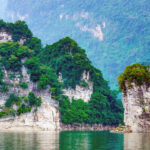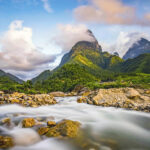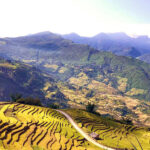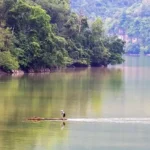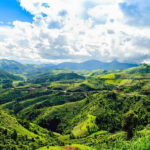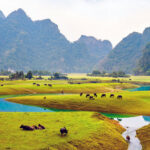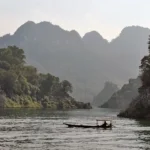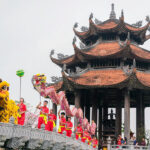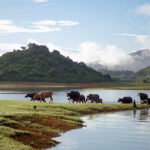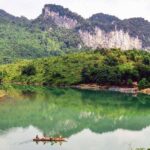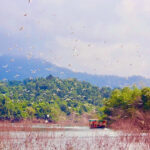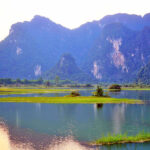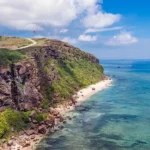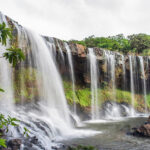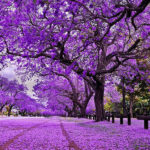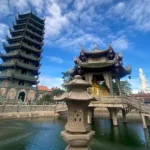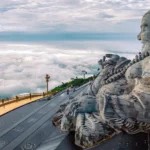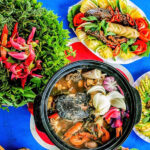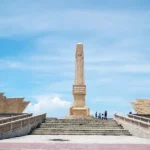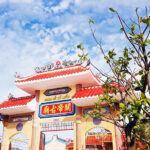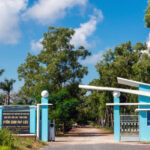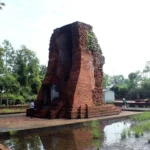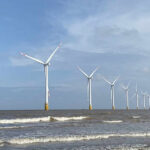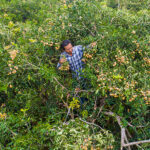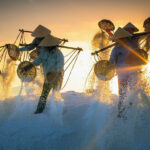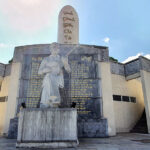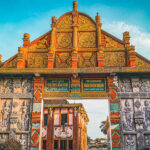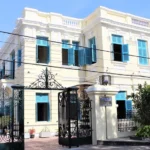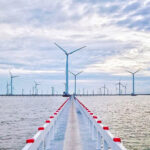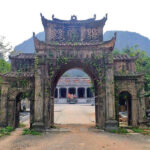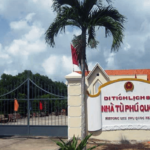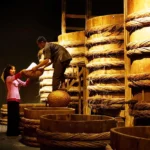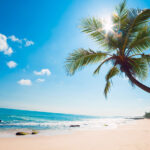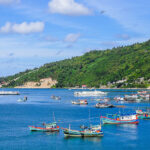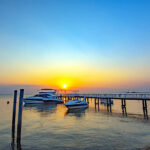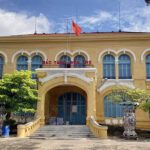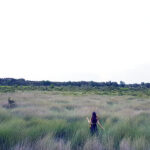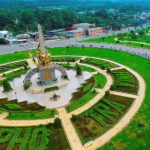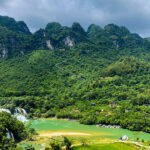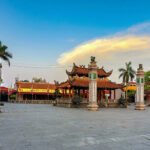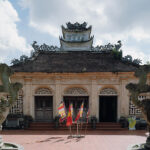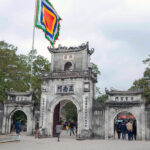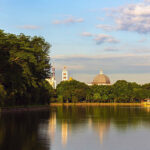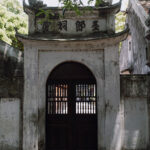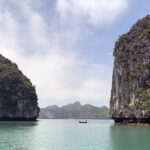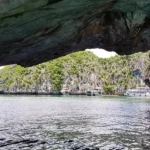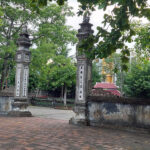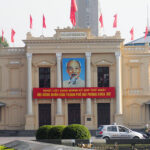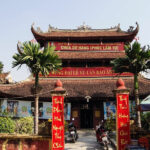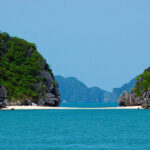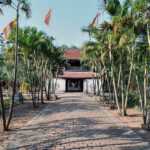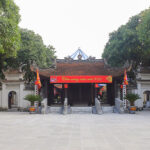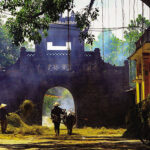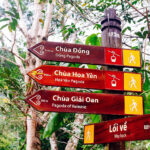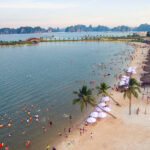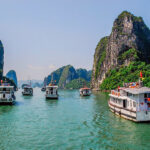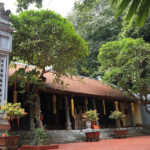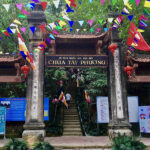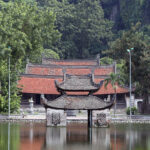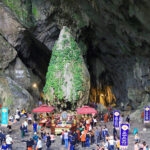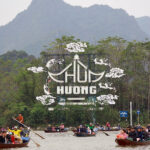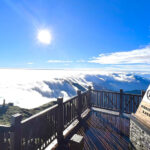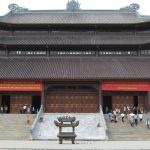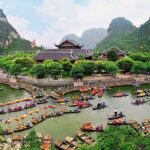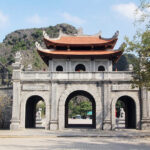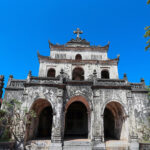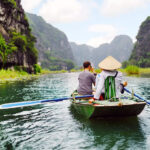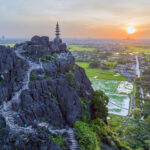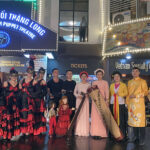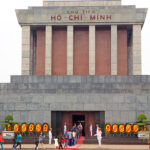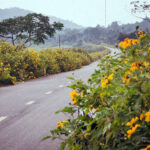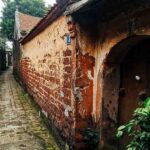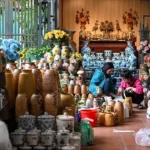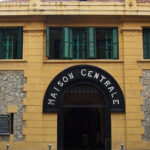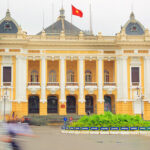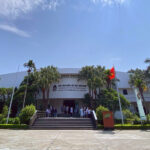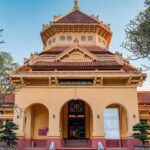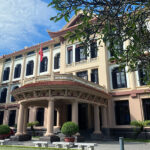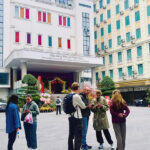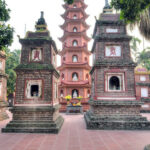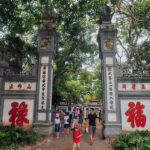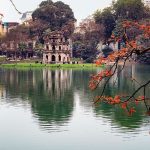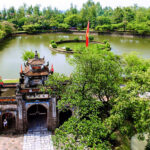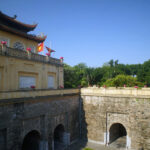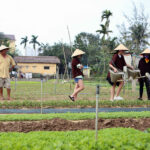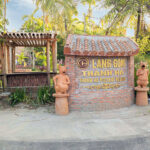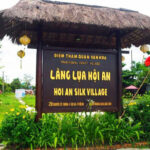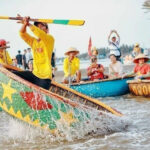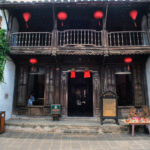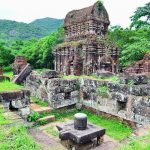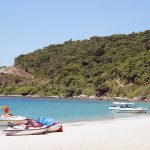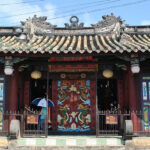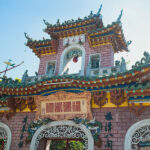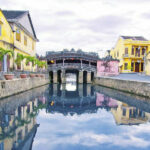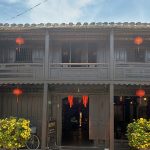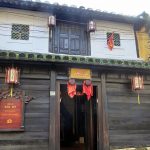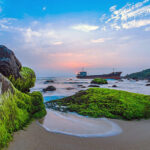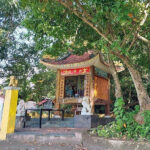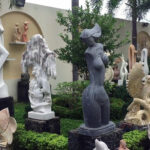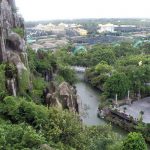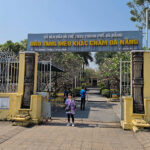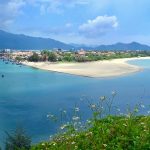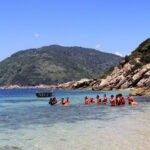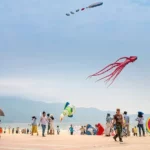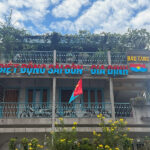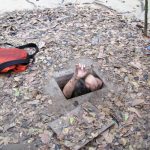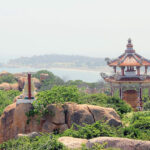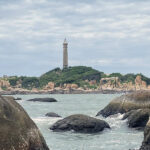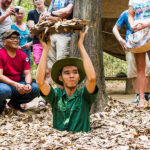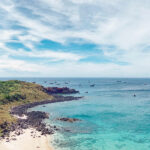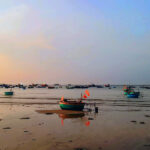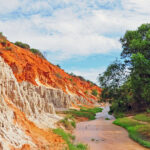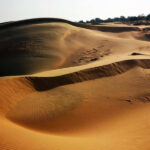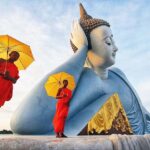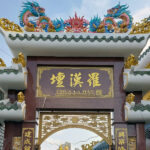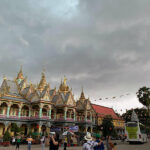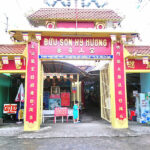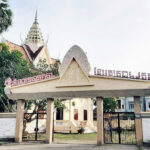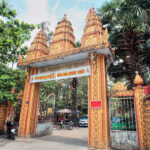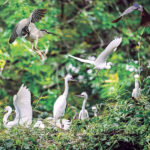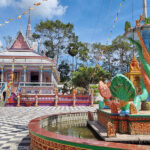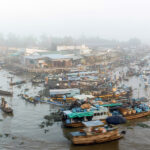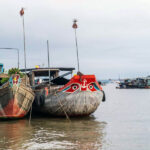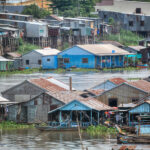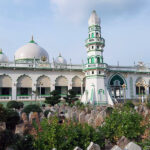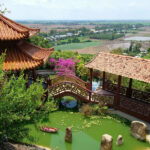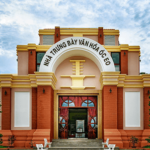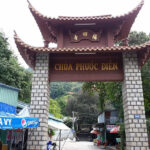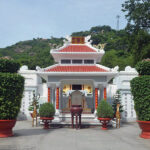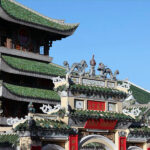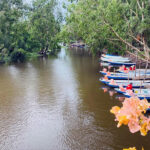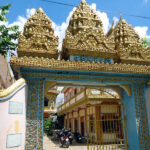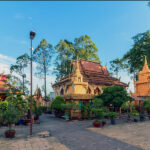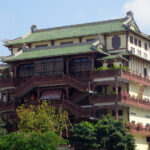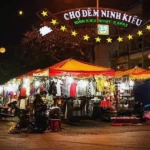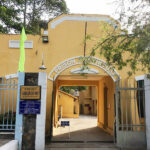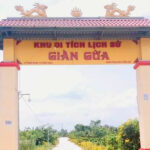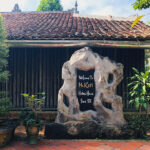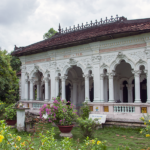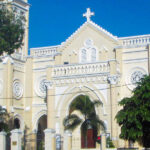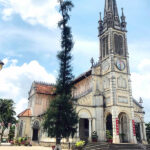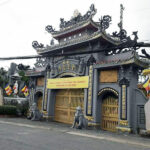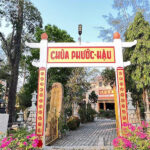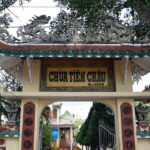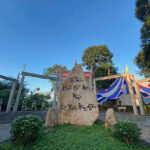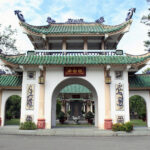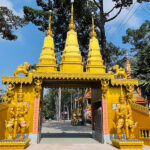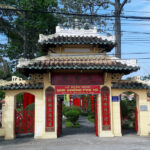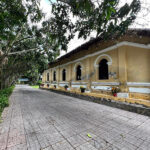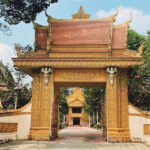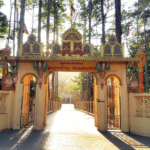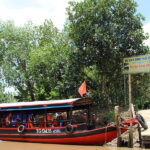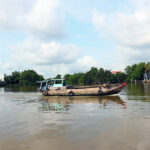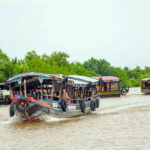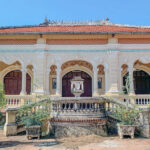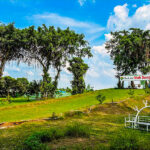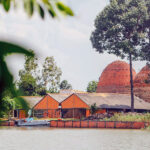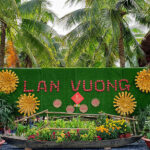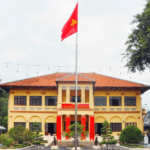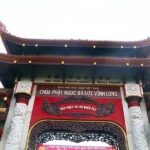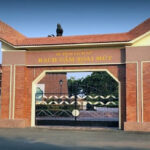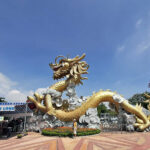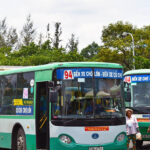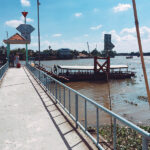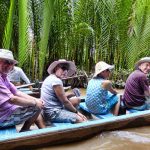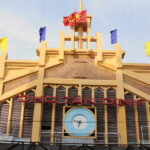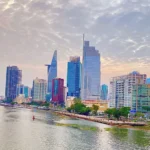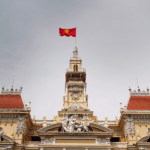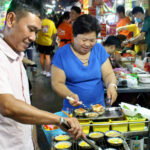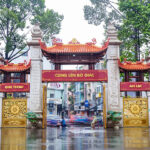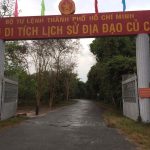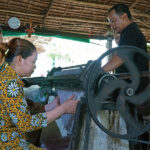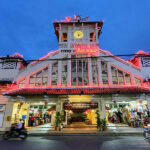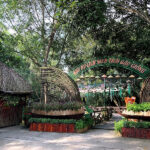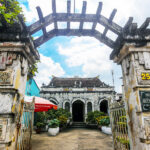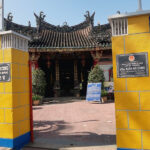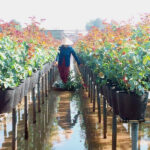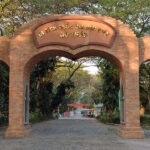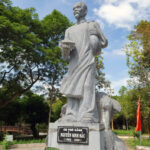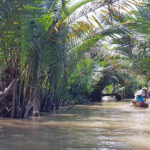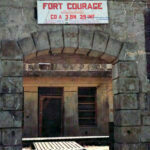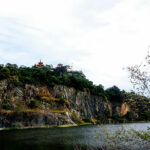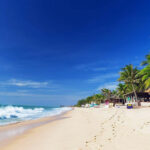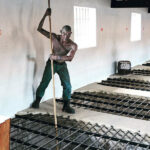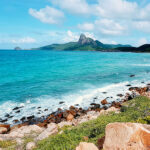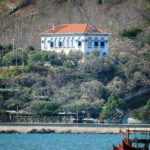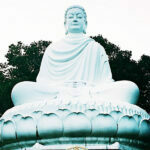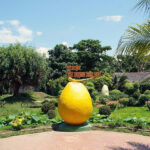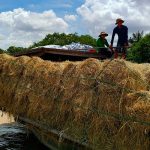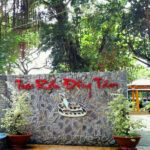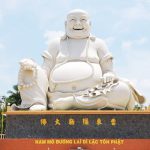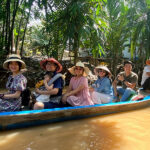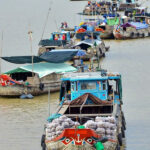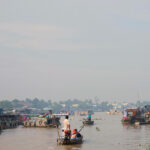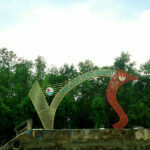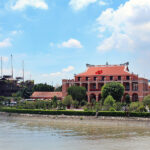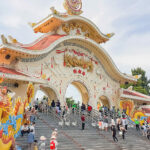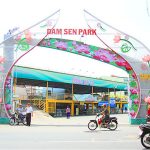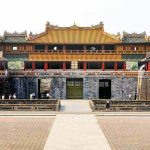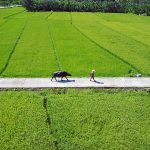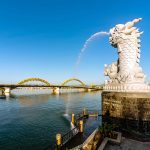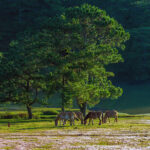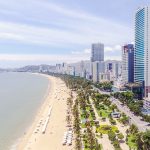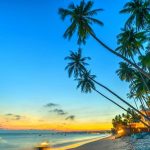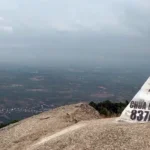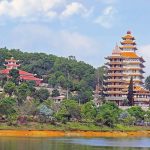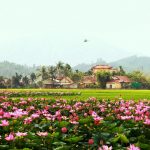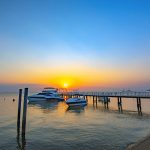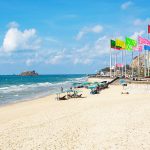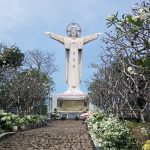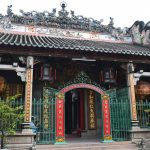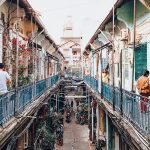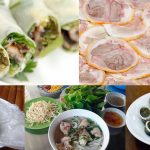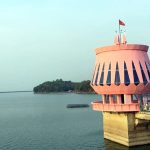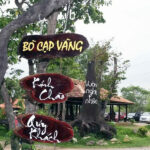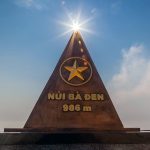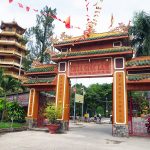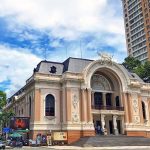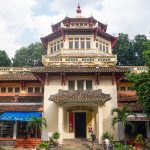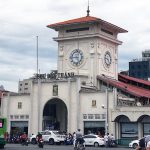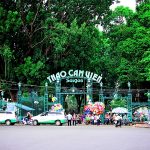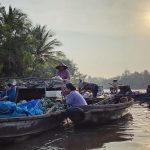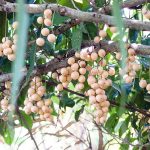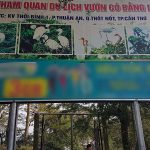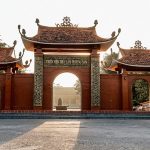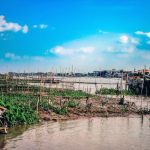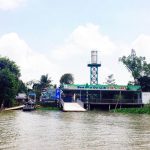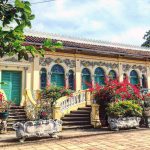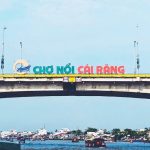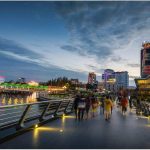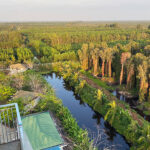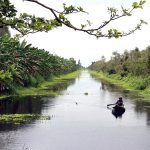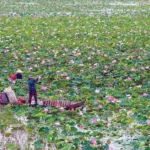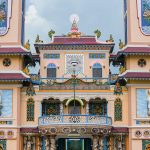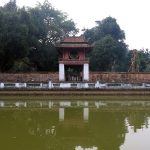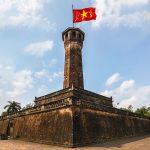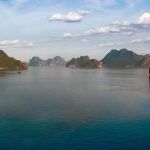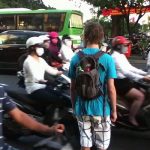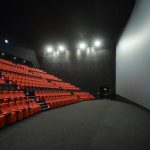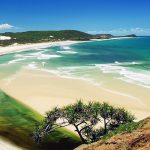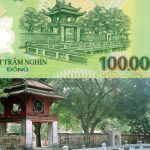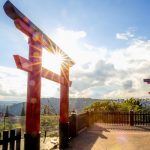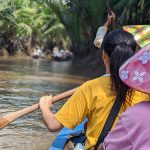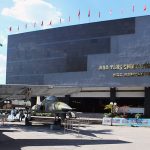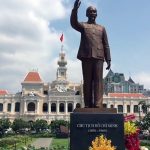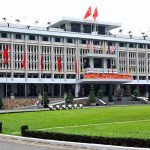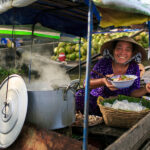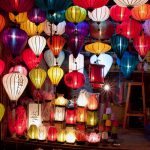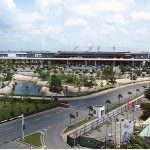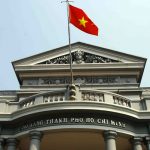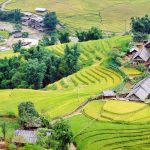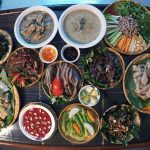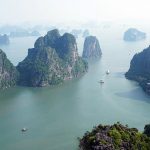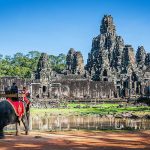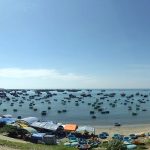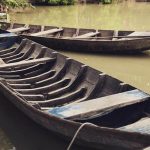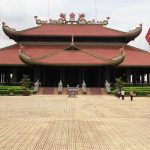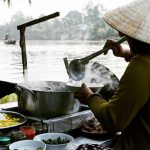Dak Lak is located at the headwaters of the Serepok River system and part of the Ba River. This land has a rich natural beauty, in harmony with rivers interspersed with mountains, hills, valleys, primeval forests, rivers, lagoons, bays, islands… very diverse!. This destination still has many beautiful, pristine and mysterious landscapes.
Table of Contents
General information about Dak Lak
In 2025, Dak Lak (formerly Darlac) was merged with Phu Yen province, named Dak Lak province with an area of 18,096 km². Dak Lak is a coastal province located in the South Central Coast, Central Vietnam and is the third largest province in Vietnam. The administrative center of the province is Buon Ma Thuot ward. Dak Lak is considered one of the cradles nurturing the Central Highlands Gong Cultural Space, recognized by UNESCO as an oral and intangible masterpiece of humanity.
When is Dak Lak beautiful?
The new Dak Lak has a diverse climate divided by the Truong Son mountain range as follows:
The western and central parts of the province (belonging to the old Dak Lak province and the former western part of Phu Yen province) have two distinct seasons, the rainy season from May to October, the dry season from November to April of the following year, the average temperature in the year is 24 degrees Celsius. Dak Lak is most beautiful around the end of November, because the rainy season has passed, the autumn sky is clear and cool, the waterfall still has a lot of water.
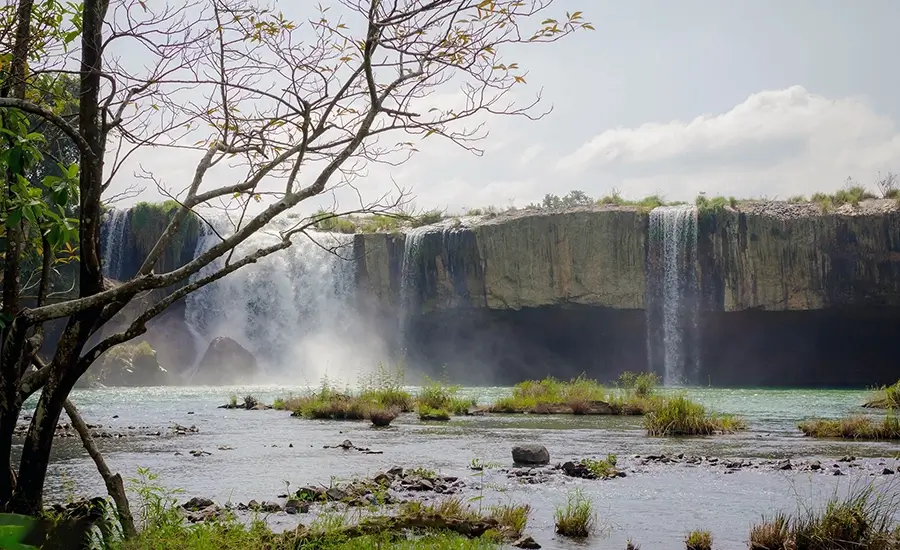
Dray Nur waterfall
The first months of the year have pleasant weather. The end of February and the beginning of March is the season of coffee flowers, April is the season of red cotton flowers on the hills, November is the season of wild sunflowers. There are also the seasons of reed flowers, apricot cherry blossoms… In the Central Highlands summer, it often rains in the afternoon, but it stops quickly. Therefore, you should focus your time on visiting in the morning.
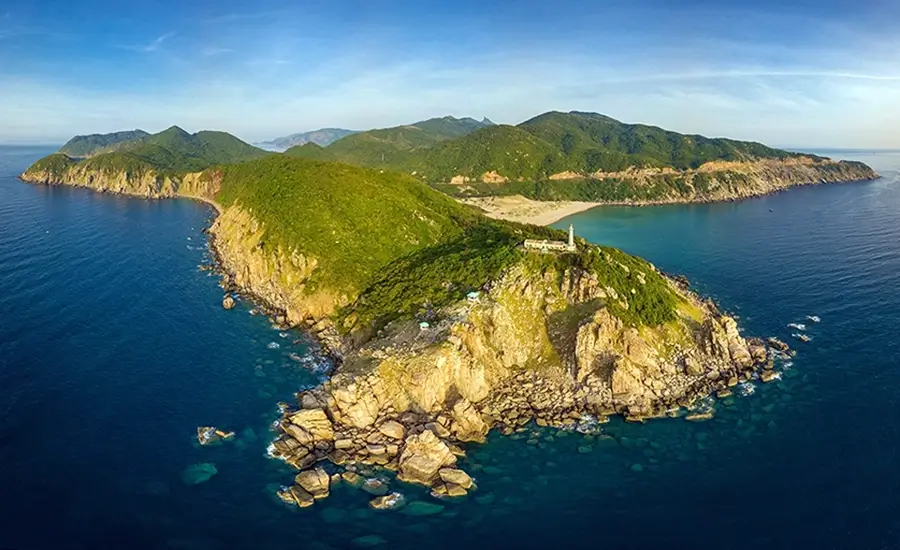
The eastern part of the Truong Son range (in the old Phu Yen province) has mountains on three sides, the North has the Cu Mong pass, the South is the Ca pass, the West is the eastern slope of the Truong Son range, and the East is the East Sea. The rainy season is from September to December. Therefore, for the most convenient sightseeing, you should come here during the dry season from January to August. In addition, you can also arrange to come during festivals, listen to folk singing – Bai Choi, a national intangible cultural heritage. Phu Yen in the summer not only gives visitors the opportunity to immerse themselves in the blue sea but is also an ideal photo hunting spot for photographers as well as an adventure place for young backpackers.
Transportation to Dak Lak
Buon Ma Thuot City and Tuy Hoa area of Dak Lak are the two stops, the most attractive tourist destinations of the province. Both of these locations can be reached by means of transport such as plane, car, bus or motorbike.
Buon Ma Thuot is about 350 km from Ho Chi Minh City, about 1,400 km from Hanoi. Vietnam Airlines, and Vietjet Air all have flights to Buon Ma Thuot. Round-trip fares range from 800,000 to 1,000,000 VND if flying from Ho Chi Minh City, about 60 minutes. Direct flights from Hanoi take about 1 hour and 45 minutes, round-trip fares are about 2,000,000 VND.
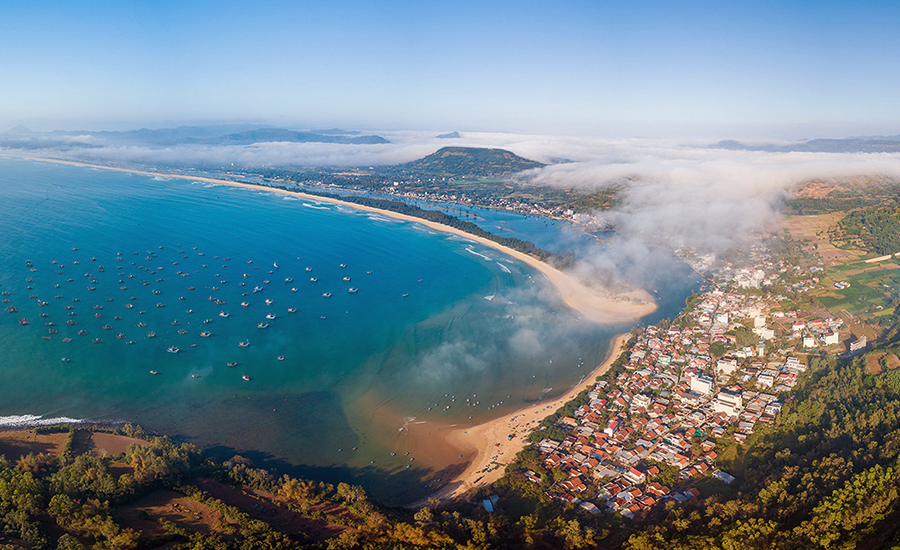
A view from flight HCM – TBB (source: collected)
Bus tickets from Ho Chi Minh City to Buon Ma Thuot range from 200,000 to 400,000 VND; buses departing from Hanoi cost from 600,000 VND. The travel time from Ho Chi Minh City is about 8 hours and more than a day for the bus from Hanoi.
Tuy Hoa is about 1,150 km from Hanoi and 550 km from Ho Chi Minh City. The airport and train station in Phu Yen (old) are both in Tuy Hoa. Airlines Vietnam Airlines and VietJet Air both have flights to Tuy Hoa, from Hanoi and Ho Chi Minh City, round-trip ticket prices range from 1.5 million to 5 million VND depending on the time. The airport is about 10 km from Tuy Hoa city center.
Train tickets cost from 400,000 to 1,000,000 VND depending on the seat type and departure location. If you take a sleeper bus from Ho Chi Minh City, you depart from Mien Dong bus station, take the 17pm or 18pm bus to arrive in Tuy Hoa area early in the morning. The round-trip ticket price is about 600,000 VND per person.
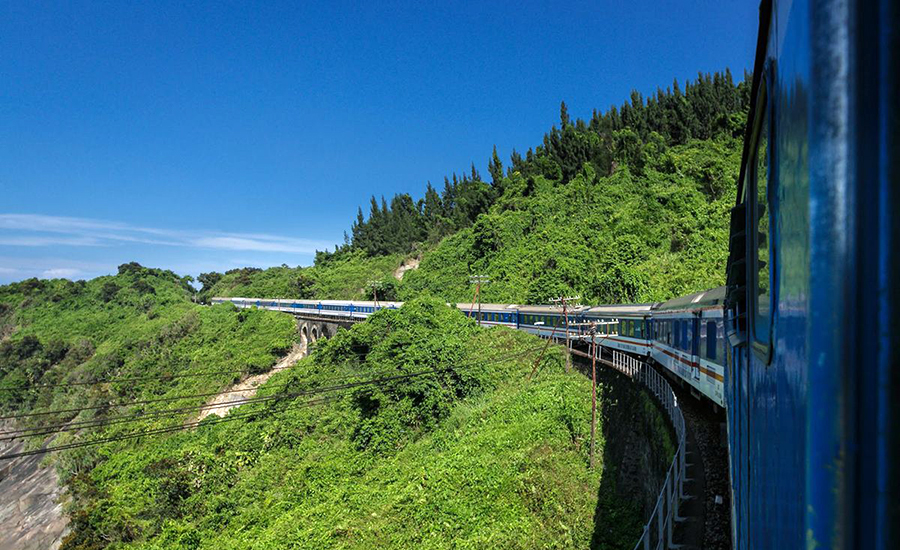
A view from train HCM – Tuy Hoa via Ca Pass (source: collected)
If you want to stop freely, you can go by motorbike private car to Dak Lak. Starting from Ho Chi Minh City, you go in the direction of National Highway 14. The road is nice so you don’t need to worry too much, but check and maintain your vehicle carefully before departure.
Accommodations in Dak Lak
There are many accommodation options if you stay right in the center of Buon Ma Thuot city. Muong Thanh Hotel, Thanh Mai Hotel, Nice, Bazan Xanh, Biet Dien, Elephants, Sai Gon Ban Me, Hami Garden… are highly rated accommodation establishments. Prices range from 300,000 to 900,000 VND per night. Some famous homestays are Zan Homestay, Lee’s House, Doi Sao Homestay… with prices from 300,000 to 1,200,000 VND per night. If you go in a large group, you can stay in Ban Don tourist area or Lak lake to feel immersed in nature and mountains. Lak Tented Camp is a famous lakeside resort in Buon Ma Thuot.
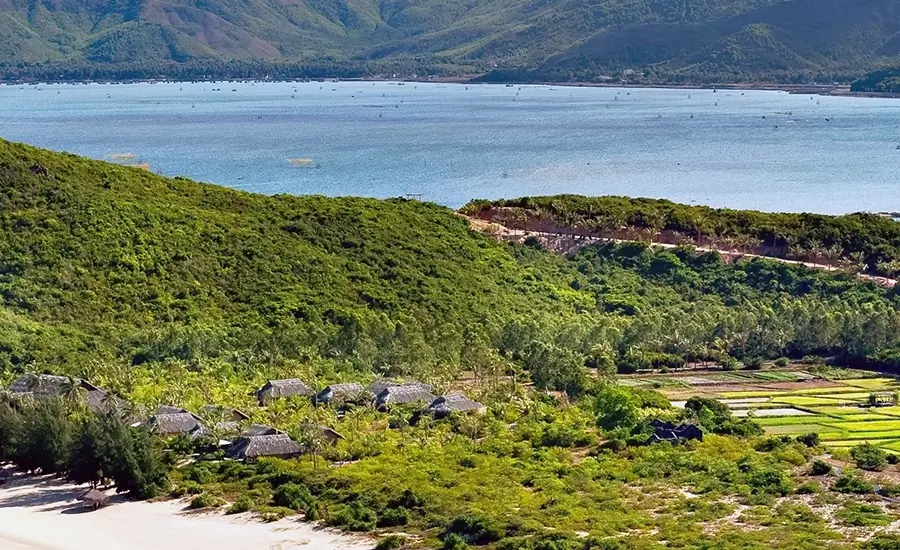
Zannier hotel in Dak Lak
Old Phu Yen in general and Tuy Hoa in particular have few high-end resorts and hotels. Budget hotels and motels in the city cost an average of 150,000 to 300,000 VND per night. Some luxury resorts include Rosa Alba Resort, Sala Grand Tuy Hoa Hotel, Saigon Phu Yen Hotel… with room rates ranging from 700,000 to 5,000,000 VND per night. Farther from the center, there is Zannier Hotels Bai San Ho in Xuan Canh commune, with prices ranging from 10,000,000 VND per night.
Tourist attractions in Dak Lak
From the center of Buon Ma Thuot city and Tuy Hoa, within a radius of about 50 km, Dak Lak has many places to explore. The beautiful natural landscapes on the trip are quite far from the city, so you can divide it into sightseeing routes of about 3 days 2 nights, or longer if you have extra time.
The best beaches and bays
Xep Beach
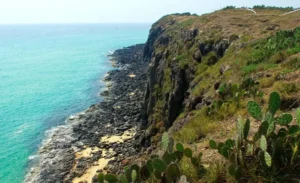 Xep beach is a place where you can stand precariously on a high cliff and admire the emerald green sea below. Xep beach is located in Tuy An Nam commune, with a coastline of about 500 m and owns a golden sand beach, a vast pine forest and precarious cliffs covered with cacti. This place is the setting for the famous movie “I see yellow flowers on green grass”.
Xep beach is a place where you can stand precariously on a high cliff and admire the emerald green sea below. Xep beach is located in Tuy An Nam commune, with a coastline of about 500 m and owns a golden sand beach, a vast pine forest and precarious cliffs covered with cacti. This place is the setting for the famous movie “I see yellow flowers on green grass”.
To fully enjoy the beauty of Xep beach and participate in sea activities, you should visit during the dry season. However, the noon sun is quite harsh, so you should only come early in the morning (from 8am to 11am) or in the cool afternoon (after 3pm) for the most comfortable experience.
Ro Bay and natural preservation area
Ro Bay is in the south of Dak Lak Province, 25km from Tuy Hoa on the national Highway. It is definitely one of the most beautiful seaside landscapes of Central Vietnam. Surrounded by the Hon Ba mountains, Ro bay is an enclosed bay that is so deep it can receive ships weighing more than 10,000 tons.
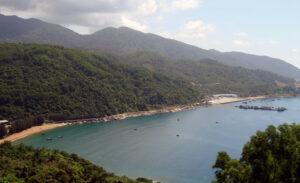 Along the coast, there are small, beautiful and attractive beaches, such as Hon Mua beach. On the way back to Tuy Hoa, you can stop to admire Vung Ro Bay and hear more about the Ho Chi Minh Trail at sea. Next, if you are still interested in exploring, learn how the locals catch lobsters and observe the life of fishermen.
Along the coast, there are small, beautiful and attractive beaches, such as Hon Mua beach. On the way back to Tuy Hoa, you can stop to admire Vung Ro Bay and hear more about the Ho Chi Minh Trail at sea. Next, if you are still interested in exploring, learn how the locals catch lobsters and observe the life of fishermen.
Next to Ro Bay is a Natural Preservation Area, north of Ca Hill which is a protected forest stretching across the Vong Phu mountains. The forest which covers an area of 6,780ha has rich flora and fauna, including 191 species of plants, 22 animal species, and 55 species of birds. Some species, and rare animals, such as pheasants, red-faced monkeys, Tibetan bears, Malaysan bears, pangolins, and panthers, also live in the forest.
O Loan Lagoon
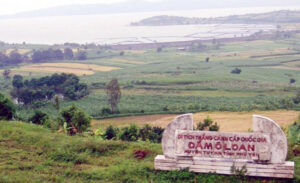 A national scenic relic recognized in 1996, the lagoon has a water surface area of 1,570 hectares, an average depth of about 1.3m, and connects to the East Sea through Le Thinh and Tan Quy estuaries. Stroll around and admire the captivating beauty of the lagoon landscape. You can wait until the afternoon to watch the sunset.
A national scenic relic recognized in 1996, the lagoon has a water surface area of 1,570 hectares, an average depth of about 1.3m, and connects to the East Sea through Le Thinh and Tan Quy estuaries. Stroll around and admire the captivating beauty of the lagoon landscape. You can wait until the afternoon to watch the sunset.
Every year, on the 7th day of the first lunar month, the traditional boat racing festival of O Loan lagoon is held, demonstrating the traditional folk culture of Phu Yen. In the lagoon, there are many kinds of precious seafood such as grouper, crab, shrimp, king crab, scallop,… but the most delicious and famous is still the blood cockle, with thick rice, sweet meat and very fragrant, more fragrant than blood cockles from other places.
Long Thuy beach
Located in Binh Kien commune, Long Thuy beach is an incredibly beautiful beach of white sand and clear water flowing under the shadows of coconut trees. Long Thuy is also known by another name, My A beach, because this place has a long stretch of fine white sand. In addition, the beach still retains its wild beauty because there are not many constructions for tourism. From the beach, there are big islands visible in the distance. The natural beauty of this place is the fulcrum to attract tourists.
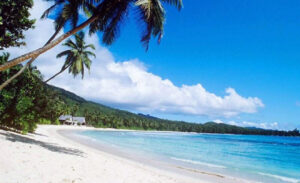 Long Thuy beach has the typical climate of the Central coastal region, the most ideal time for you to come here is from April to August every year. At this time, the weather is nice, the sky is blue, the climate is dry, helping you to fully enjoy the beauty of paradise given by nature.
Long Thuy beach has the typical climate of the Central coastal region, the most ideal time for you to come here is from April to August every year. At this time, the weather is nice, the sky is blue, the climate is dry, helping you to fully enjoy the beauty of paradise given by nature.
Along the Long Thuy coast, there is a small fishing village. Although life has developed, the people here still maintain their traditional profession, preserving the rustic wildness of the fishing village. Therefore, anyone who comes here can experience daily life by living with the locals, welcoming the fishing boats back, going to the fish market or to the fish sauce production village, to see the elaborate working process that creates the rich flavor of the specialty. These will be extremely new and interesting experiences and will become the highlight of your trip to explore Dak Lak.
Nature & wildlife areas
Da Dia Rapids
The Da Dia Rapids is located in Tuy An Dong commune, 80km north of Tuy Hoa ward, close to the sea. These strangely structured rocks include large upright stones equally arranged in a star pattern.
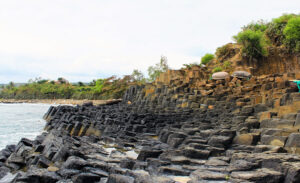 There is a also a pile of dark cylindrical stones, half immersed in the water. It is estimated that there are 35,000 stone columns, each one is 60 – 80cm high. In the middle of the rapids, there is small fissure filled with rain and seawater and containing blue, red, violet and yellow fish. Around the fissure, socks stick out at odd angles. The waves break into white foam as they wash up on the rocks. In front of the rapids, there is a large and deep cave. This cave can hold up to 100 people.
There is a also a pile of dark cylindrical stones, half immersed in the water. It is estimated that there are 35,000 stone columns, each one is 60 – 80cm high. In the middle of the rapids, there is small fissure filled with rain and seawater and containing blue, red, violet and yellow fish. Around the fissure, socks stick out at odd angles. The waves break into white foam as they wash up on the rocks. In front of the rapids, there is a large and deep cave. This cave can hold up to 100 people.
This site is quite difficult to reach as the landscape is still wild and primitive. You can also see fishermen’s basket boats anchored in the distance, creating a harmonious, peaceful picture of the poetic coastal area. Visitors can visit Da Dia Rapids all year round, except the rainy day and the storm sea. The rapids have been listed as a National Heritage Site by the Ministry of Culture and Information.
Dai Lanh Cape
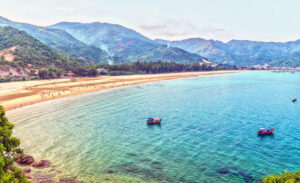 Dien (also known as Dai Lanh) is a cape jutting out into the sea from a branch of the Truong Son mountain range, facing straight to Mon beach, in Hoa Xuan commune. Dai Lanh cape is considered the second farthest point to the East, after Doi cape in Van Ninh, Khanh Hoa and is one of the places to welcome the first sunrise on the mainland of Vietnam. This is a famous tourist attraction in Vietnam and was recognized by the Ministry of Culture, Sports and Tourism as a National Monument in 2008.
Dien (also known as Dai Lanh) is a cape jutting out into the sea from a branch of the Truong Son mountain range, facing straight to Mon beach, in Hoa Xuan commune. Dai Lanh cape is considered the second farthest point to the East, after Doi cape in Van Ninh, Khanh Hoa and is one of the places to welcome the first sunrise on the mainland of Vietnam. This is a famous tourist attraction in Vietnam and was recognized by the Ministry of Culture, Sports and Tourism as a National Monument in 2008.
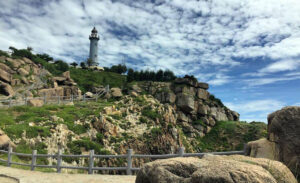 In Dai Lanh cape, there is a lighthouse which officially built in 1890 by French architects and named same as the cape. The lighthouse consists of a 5 m high building with an area of 320 square meters, with an underground tank to store rainwater and a solar panel system installed on the ceiling. The lighthouse tower is a slender, gray cylinder, 26.5 m high from the ground, 110 m above sea level and can send light signals up to 27 nautical miles (approximately 40 km), playing an important role in navigating ships at sea. This is the farthest lighthouse to the East on the mainland of Vietnam.
In Dai Lanh cape, there is a lighthouse which officially built in 1890 by French architects and named same as the cape. The lighthouse consists of a 5 m high building with an area of 320 square meters, with an underground tank to store rainwater and a solar panel system installed on the ceiling. The lighthouse tower is a slender, gray cylinder, 26.5 m high from the ground, 110 m above sea level and can send light signals up to 27 nautical miles (approximately 40 km), playing an important role in navigating ships at sea. This is the farthest lighthouse to the East on the mainland of Vietnam.
Following the trail, you can climb to Dai Lanh lighthouse, from here you can see the vast ocean and see the ships going back and forth on the sea. This is the place to see the earliest sunrise in Vietnam. This lighthouse is 100 years old and is still in operation. The entrance fee is about 10,000 VND per person.
Hon Yen (Yen islet)
More than 20 km from Tuy Hoa, Hon Yen in Tuy An Nam commune is a favorite check-in spot not only for tourists but also for photographers thanks to its colorful and shaped coral reefs on land.
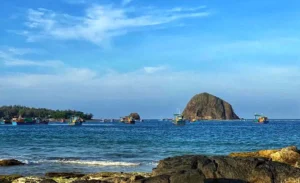 Visitors do not have to take a boat to the middle of the sea, but only need the tide to recede to see the coral. According to locals, the tide is only low in the afternoons of the first days of the month, or in the middle of the lunar month. Each low tide usually lasts 2-3 days, revealing layers of thorny rocks and poetic golden sand beaches.
Visitors do not have to take a boat to the middle of the sea, but only need the tide to recede to see the coral. According to locals, the tide is only low in the afternoons of the first days of the month, or in the middle of the lunar month. Each low tide usually lasts 2-3 days, revealing layers of thorny rocks and poetic golden sand beaches.
If you have time to dive further, you can also admire larger coral reefs below the water surface east of Hon Yen, but you must go with at least 2 people. However, when viewing or taking pictures of coral, you need to pay attention to choosing a location to avoid stepping on them, and do not litter to protect the marine environment.
Vuc Hom Waterfall
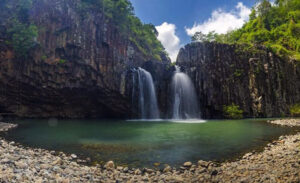 Vuc Hom Waterfall is located in Vinh Xuan village, Tuy An Tay commune, about 45 km from Tuy Hoa ward. This is a waterfall located between basalt columns that were naturally formed in a similar way to Da Dia Rapids, so it is also known as “Da Dia Rapids on land”. The road to get here is not easy, but when reaching the finish line, visitors will be overwhelmed by the majestic scenery of the natural waterfall pouring down from a height of 20 m. At the foot of the waterfall is a large, cool lake, surrounded by cool green forest canopies.
Vuc Hom Waterfall is located in Vinh Xuan village, Tuy An Tay commune, about 45 km from Tuy Hoa ward. This is a waterfall located between basalt columns that were naturally formed in a similar way to Da Dia Rapids, so it is also known as “Da Dia Rapids on land”. The road to get here is not easy, but when reaching the finish line, visitors will be overwhelmed by the majestic scenery of the natural waterfall pouring down from a height of 20 m. At the foot of the waterfall is a large, cool lake, surrounded by cool green forest canopies.
This place is very suitable for those who love camping, escaping the heat in the mountains and forests or like to hunt for photos. Because the Vuc Hom waterfall area is still wild and has no services, visitors who come to explore should pay attention to go in groups, clean up the trash before returning and not play risky games.
Van Hoa Plateau
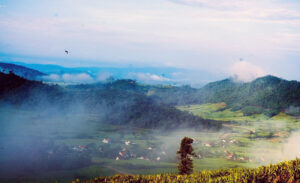 A fertile red basalt plateau, Van Hoa is located in the territory of Van Hoa commune, about 40 km from Tuy Hoa ward. This place is known as “Da Lat of Phu Yen” because it is located at an altitude of 400 m, has a cool climate, lots of sunshine and wind and is often covered with misty clouds.
A fertile red basalt plateau, Van Hoa is located in the territory of Van Hoa commune, about 40 km from Tuy Hoa ward. This place is known as “Da Lat of Phu Yen” because it is located at an altitude of 400 m, has a cool climate, lots of sunshine and wind and is often covered with misty clouds.
The road leading to Van Hoa plateau will pass through vast fields of sugarcane grass, cajuput, corn, cassava, pepper… green enough to make visitors fall in love. Although there are not many tourist services here, there is no shortage of places to visit and check-in such as Uncle Ho’s church, Tra Ke church, Ede village, Ba Ha river hydroelectric dam, Don market, Camping trip campsite…
Da Bia Mountain
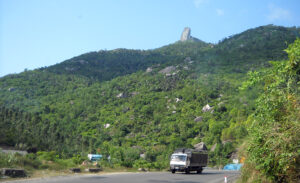 The mountain is famous for its giant stele stone, about 80 m high, on the top of the mountain that can still be seen from afar. Da Bia Mountain has an absolute height of 706 m, on the top of which clouds often cover the stele stone, creating a majestic and impressive landscape.
The mountain is famous for its giant stele stone, about 80 m high, on the top of the mountain that can still be seen from afar. Da Bia Mountain has an absolute height of 706 m, on the top of which clouds often cover the stele stone, creating a majestic and impressive landscape.
From here, you can see the surrounding sea, see Ro Bay at the foot of the mountain to the south or Van Phong Bay of Khanh Hoa. On sunny days, visitors can even see Nha Trang city. Looking to the north, you will have a panoramic view of Tuy Hoa plain, Chop Chai mountain located between Tuy Hoa city and Ba river.
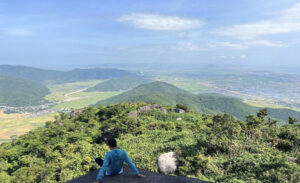
Locals consider Da Bia Mountain as one of the famous symbols of Phu Yen (currently Dak Lak province), along with other places such as Nhan Mountain and Da Rang River in Tuy Hoa ward.
The mountain was also named “God’s Finger” by French sailors because it helped them locate the mainland of Vietnam. In September 2008, the Ministry of Culture, Sports and Tourism decided to recognize this unique landscape as a National Landscape.
There is a trail to the top about 2.2 km long. The steep path, many bushes, and many steps make climbing the mountain take more than 2 hours.
Location: Hoa Xuan ward.
Lak Lake
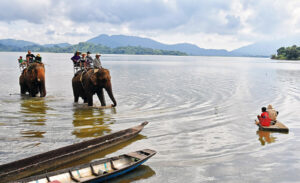 Lak Lake is the second largest natural freshwater lake in Vietnam after Ba Be Lake, Bac Kan. The lake is surrounded by large mountain ranges with primeval forests. Arriving at Lak Lake around 16:30 p.m. is the perfect time to watch the sunset over the lake.
Lak Lake is the second largest natural freshwater lake in Vietnam after Ba Be Lake, Bac Kan. The lake is surrounded by large mountain ranges with primeval forests. Arriving at Lak Lake around 16:30 p.m. is the perfect time to watch the sunset over the lake.
The most prominent feature of Lak Lake is the dugout canoe, a typical water vehicle of the Central Highlands. Therefore, the most interesting activity here is a boat tour around the lake to see the scenery and swim.
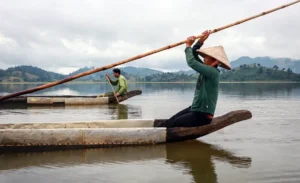 In addition, you can visit Jun or M’Lieng villages, where most of the M’Nong people live, to experience the community life of the Central Highlands. Around the lake, there are also two architectural relics for visitors to visit: the M’Nong longhouse and the palace of King Bao Dai.
In addition, you can visit Jun or M’Lieng villages, where most of the M’Nong people live, to experience the community life of the Central Highlands. Around the lake, there are also two architectural relics for visitors to visit: the M’Nong longhouse and the palace of King Bao Dai.
Dugout canoe ticket:
- 80,000 VND/boat for 30 minutes at Jun village.
- 150,000 VND/boat for two passengers for 30 minutes at Lak Lake tourist area.
Dray Nur Waterfall – Dray Sap Waterfall
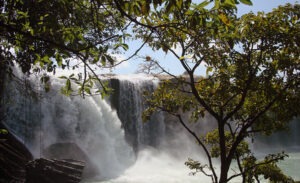 The legendary Serepok created beautiful waterfalls such as Dray Sap, Dray Nur, Gia Long, Trinh Nu, Bay Nhanh, Krong Kmar, Bim Bip… Dray Nur is considered the most majestic waterfall in the Central Highlands, nearly 30 km from the center of Buon Ma Thuot. The white waterfall is about 250m wide in the flood season, more than 30m high pouring down into the cave. The most interesting thing is to cool off in the small stone holes and under the water pouring from above on the cliff behind the waterfall.
The legendary Serepok created beautiful waterfalls such as Dray Sap, Dray Nur, Gia Long, Trinh Nu, Bay Nhanh, Krong Kmar, Bim Bip… Dray Nur is considered the most majestic waterfall in the Central Highlands, nearly 30 km from the center of Buon Ma Thuot. The white waterfall is about 250m wide in the flood season, more than 30m high pouring down into the cave. The most interesting thing is to cool off in the small stone holes and under the water pouring from above on the cliff behind the waterfall.
Locals consider Dray Nur as the wife waterfall and Dray Sap as the husband waterfall. Although both are waterfalls created by the Serepok River, Dray Nur waterfall belongs to Dak Lak province while Dray Sap waterfall belongs to Lam Dong province. However, you can go from Dray Nur waterfall to Dray Sap side, only 2 suspension bridges apart.
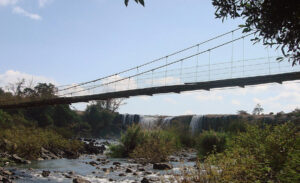
From Dray Nur waterfall, you can walk to Gia Long waterfall (Dray Sap Thuong) 2 km away, or travel about 12 km by road to the main area of Dray Sap waterfall. Dray Sap waterfall is not as large as Dray Nur but still makes visitors excited by the white foaming water – true to the name “smoke waterfall” in the local language.
The entrance ticket to Dray Nur waterfall is 30,000 VND. You can buy a combo ticket Dray Nur – Gia Long for 50,000 VND.
Location: Ea Na Ward.
National parks
Dak Lak has two famous national parks, Yok Don and Chu Yang Sin, in addition to Nam Ka and Ea So national reserves. Besides exploring the forest, you can also participate in many activities when visiting the national park such as camping in the forest, bathing in waterfalls or trekking, exploring the lives of ethnic minorities…
Chu Yang Sin National Park
Chu Yang Sin National Park has spectacular scenery with more than 40 mountain ranges of different heights, many steep slopes, vast forests and streams, rapids, and waterfalls intertwined and overlapping.
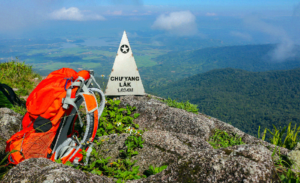 Chu Yang Sin range divides the park into two areas, North – South, is the highest mountain range, with a peak of 2,442 m. Chu Yang Sin peak is known as the second roof of the Central Highlands, after Ngoc Linh peak in Quang Ngai province. The journey to conquer Chu Yang Sin takes at least 3 days and 2 nights.
Chu Yang Sin range divides the park into two areas, North – South, is the highest mountain range, with a peak of 2,442 m. Chu Yang Sin peak is known as the second roof of the Central Highlands, after Ngoc Linh peak in Quang Ngai province. The journey to conquer Chu Yang Sin takes at least 3 days and 2 nights.
With an area of up to 589 km², Chu Yang Sin spreads over many communes and is more than 60km from the city center. You can travel by motorbike from Buon Ma Thuot to Lien Son town, then follow the trail about 20km to reach the national park. There are 876 plant species (143 endemic to Vietnam, 54 listed in the Vietnam Red Book); 203 bird species; 46 mammal species recorded here.
Yok Don National Park
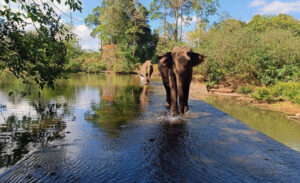 Yok Don National Park is one of the largest nature reserves in Vietnam, home to many large animals such as bison, gaur, buffalo, elephants, monkeys, gibbons, tigers, leopards, peacocks, pheasants, hawks… This is also a place to preserve many unique cultural values of the Central Highlands ethnic groups such as Ede, M’Nong…
Yok Don National Park is one of the largest nature reserves in Vietnam, home to many large animals such as bison, gaur, buffalo, elephants, monkeys, gibbons, tigers, leopards, peacocks, pheasants, hawks… This is also a place to preserve many unique cultural values of the Central Highlands ethnic groups such as Ede, M’Nong…
With an area of more than 1.15 km², Yok Don spreads over the territory of 2 provinces Dak Lak and Lam Dong. The national park has up to 90% of the area of primary forest, of which the main forest is dipterocarp forest. This is also the only forest in Vietnam that still preserves this special type of forest.
Ancient ruins
Nhan tower
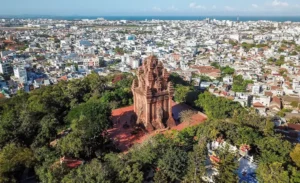 Nhan tower was built on the top of Nhan Mountain on northern bank of Da Rang river, in Tuy Hoa. This was a place of worship for the Cham people date in the late 11th to the early 12th centuries. The four story tower has a pyramidal shape. It is 25m high and each side of its base is 11m long. The middle date topped with a monstrous head, harmoniously combines the pyramidal symbol with the linga symbol of Cham worship.
Nhan tower was built on the top of Nhan Mountain on northern bank of Da Rang river, in Tuy Hoa. This was a place of worship for the Cham people date in the late 11th to the early 12th centuries. The four story tower has a pyramidal shape. It is 25m high and each side of its base is 11m long. The middle date topped with a monstrous head, harmoniously combines the pyramidal symbol with the linga symbol of Cham worship.
During the French colonial period, the tower was nearly ruined. At the end of 1960, however it was rebuilt by the administration of Diem’s regime. Today, what remains from the original construction is a 1.30m-high flat stones with a lotus flower carved at the base. At the foot of Nhan mountain, there is also a square shaped rock with 5m sides on which there were three ancient characters.
Location: Le Trung Kien Street, Tuy Hoa Ward.
Yang Prong Tower
Yang Prong Tower or also known as Green Forest Cham Tower is a Cham tower in Ea Rok commune, about 100 km from Buon Ma Thuot city… Up to now, this is also the only Cham tower recorded in the Central Highlands. During the war, the tower was mined once and was severely damaged. Currently, Yang Prong Tower has been restored and has become an important tourist attraction in Dak Lak.
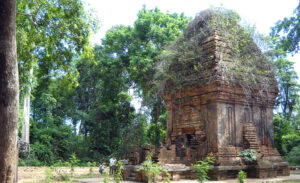
Yang Prong means the tower worshiping the Great God, the god who controls crops according to the concept of the ancient Cham people. Yang Prong Tower is an architectural block made of red bricks on a high base of green stone. The tower is still quite intact, about 10m high, built of hard bricks of various sizes. The tower has a square plan, the eastern lobby is 1.60m wide. The tower structure is square, each side is 5m long, each outer wall has 3 fake doors, the only door opens to the East, where the gods reside. The top is wide and tapered in the shape of a pen tower, different from the architecture of other Cham towers in the Central region. This is an unfinished project, because when building a tower, the Cham people never build one but usually a complex.
Scared temples and pagodas
Mang Lang Church
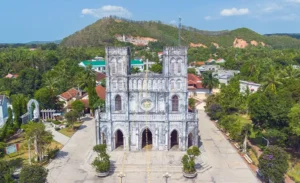 Mang Lang Church is a Catholic church located in Tuy An Dong commune. This is a church belonging to Mang Lang parish, the birthplace of Blessed Andrew Phu Yen, one of the martyrs and patron saints of Catholic youth. The church is also a pilgrimage site on the occasion of the anniversary of Blessed Andrew Phu Yen and the mass for Vietnamese Catholic youth. With a history of more than 120 years (built in 1892), Mang Lang Church is considered the oldest church in Dak Lak province and one of the oldest churches in Vietnam. The church is a quite attractive destination in Dak Lak tourist area. This is also the place where the first book in Vietnamese alphabet is kept – the Cathechismvs in octo dies diuiſus by priest Alexandre de Rhodes printed in 1651 in Rome, Italy.
Mang Lang Church is a Catholic church located in Tuy An Dong commune. This is a church belonging to Mang Lang parish, the birthplace of Blessed Andrew Phu Yen, one of the martyrs and patron saints of Catholic youth. The church is also a pilgrimage site on the occasion of the anniversary of Blessed Andrew Phu Yen and the mass for Vietnamese Catholic youth. With a history of more than 120 years (built in 1892), Mang Lang Church is considered the oldest church in Dak Lak province and one of the oldest churches in Vietnam. The church is a quite attractive destination in Dak Lak tourist area. This is also the place where the first book in Vietnamese alphabet is kept – the Cathechismvs in octo dies diuiſus by priest Alexandre de Rhodes printed in 1651 in Rome, Italy.
Khai Doan Pagoda
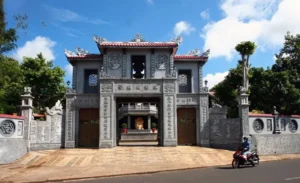 The Khai Doan Pagoda is the largest pagoda in Buon Ma Thuot city, located at 117 Phan Boi Chau, Thong Nhat ward. This is also the first pagoda built in the Central Highlands. The name Khai Doan is a combination of the names of Emperor Khai Dinh and his wife, Queen Doan Huy, meaning to acknowledge the merits of the founder of this pagoda. The entire pagoda includes the main gate (triple gate) facing the Southwest, the sanctum, Quan Am Palace, Hau To House, and Cong Duc Tang.
The Khai Doan Pagoda is the largest pagoda in Buon Ma Thuot city, located at 117 Phan Boi Chau, Thong Nhat ward. This is also the first pagoda built in the Central Highlands. The name Khai Doan is a combination of the names of Emperor Khai Dinh and his wife, Queen Doan Huy, meaning to acknowledge the merits of the founder of this pagoda. The entire pagoda includes the main gate (triple gate) facing the Southwest, the sanctum, Quan Am Palace, Hau To House, and Cong Duc Tang.
This is the largest pagoda in Buon Ma Thuot city. With the skillful hands of the Hue ancient capital’s clay workers, the pagoda has an ancient beauty with Hue’s traditional house architecture that will make visitors feel like they are returning to ancient architecture.
Tu Quang Pagoda
Tu Quang Pagoda was built in 1797, under Emperor Quang Toan of the Tay Son Dynasty on the slopes of Da Trang mountain in Tuy An Bac commune, 20km north of Tuy Hoa ward.
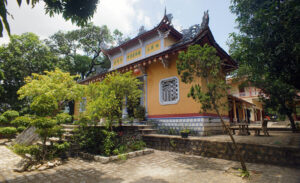 Also called Da Trang (White Stone) Pagoda, its one of the most well-known pagodas in old Phu Yen. Founded by Buddhist monk Huy Pham Chuyen of Lam Te faction, the pagoda is currently run by the tenth generation of Lam Te Buddhist monks.
Also called Da Trang (White Stone) Pagoda, its one of the most well-known pagodas in old Phu Yen. Founded by Buddhist monk Huy Pham Chuyen of Lam Te faction, the pagoda is currently run by the tenth generation of Lam Te Buddhist monks.
Facing the Cai River, it stands on an area approximately 100m high which was once the capital of Phu Yen province (currently Dak Lak Province) in the 17th century. There is a treacherous road paved with stepping-stones leading to the gate of the pagoda. The pagoda was honoured by the emperor in 1889, and burnt to a cinder in 1929. It was then rebuilt with funds raised by numerous Buddhists from provinces throughout central Vietnam. In 1988, the sanctum of Da Trang pagoda was restored.
Behind the sanctum is a tower yard and a worshipping house for ancestors. The towers are carved with ornamental images, including the four sacred animals (dragon, unicorn, turtle, and phoenix). Surrounding the pagoda is an ancient green garden of mango trees. The Da Trang mango is special product of old Phu Yen known for its sweet smell and delicious taste.
Tourist areas
Buon Don Tourist Area
Located more than 50 km from Buon Ma Thuot City, Buon Don tourist area is a destination that attracts many domestic and foreign tourists. This place is known as the “elephant territory” of the Central Highlands, famous for its tradition of hunting, taming and raising wild elephants.
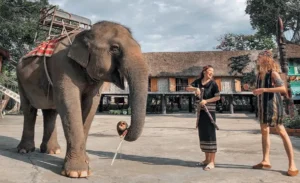 In Buon Don, you will hear stories about mahout (people who take care of and control elephants), visit the ancient stilt house over a hundred years old and the unique tomb architecture of the king of elephant hunting – Ama Kong… You can feed the elephants and take pictures under the supervision of the mahout.
In Buon Don, you will hear stories about mahout (people who take care of and control elephants), visit the ancient stilt house over a hundred years old and the unique tomb architecture of the king of elephant hunting – Ama Kong… You can feed the elephants and take pictures under the supervision of the mahout.
Because it is far from the city center, you should stay in Buon Don for lunch. Some local dishes here include bamboo rice, grilled chicken with green chili salt, wild vegetable hotpot, sour catfish soup…
Experience the suspension bridge in Buon Don through the canopy of hundreds of years old trees, nearly 1km long, made mainly from bamboo, where many tourists enjoy the feeling of swaying when crossing.
- Suspension bridge ticket: 40,000 VND per person.
- Ancient stilt house ticket: 15,000 VND per person.
- Elephant King tomb ticket: 10,000 VND per person.
- Meal: about 100,000 VND per person.
Location: Buon Don commune, Dak Lak.
Ako Dhong Village
Ako Dhong Village, also known as Co Thon Village of the Ede Ma Rin Village, is located in 95 Tran Nhat Duat, more than 2 km from Buon Ma Thuot City Center. Ako Dhong is considered “the only village that still retains the appearance and unique features of an Ede village”, however, the old architectural space is gradually being destroyed. In the Ede language, “Ako” means source, “Dhong” means valley.
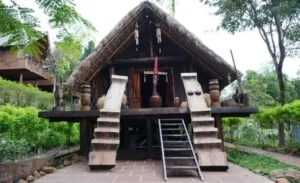
Currently, there are about 32 stilt houses, still preserving their traditional musical instruments. Currently, the village still stores 30 sets of gongs, over 50 traditional weaving frames as well as many types of jars, statues, carvings left by their ancestors, flutes, mouth flutes, bamboo flutes, drums, etc. Every house knows how to make rice wine, weave and make some of their ethnic musical instruments. Here, in addition to the people who have lived here since the establishment of the village, there are also people from other places who come here to make a living, such as opening tourism services and restaurants. The majority of the people here are of the Ede and M’Nong ethnic groups.
Historical sites
Dak Lak Museum
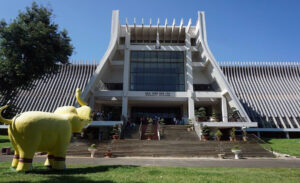 Dak Lak Museum, located on Y Ngong Street in the center of Buon Ma Thuot City, is where visitors can learn about the land of elephants and coffee in the Central Highlands. The building is designed based on the typical long house architecture of the Ede community, the most populous ethnic group in Dak Lak. Inside the museum, about 1,000 artifacts are preserved and displayed introducing the history, natural geography and culture of indigenous ethnic communities such as Ede, Mnong, Gia-rai, Xo-dang, Gie Trieng, Ma…
Dak Lak Museum, located on Y Ngong Street in the center of Buon Ma Thuot City, is where visitors can learn about the land of elephants and coffee in the Central Highlands. The building is designed based on the typical long house architecture of the Ede community, the most populous ethnic group in Dak Lak. Inside the museum, about 1,000 artifacts are preserved and displayed introducing the history, natural geography and culture of indigenous ethnic communities such as Ede, Mnong, Gia-rai, Xo-dang, Gie Trieng, Ma…
In addition, the museum is also a large green space no less than a park with many ancient trees and long grass – a place where many people choose to rest, enjoy the cool air and exercise every day. Connected to the museum is Bao Dai Palace, the residence of the last emperor of the Nguyen Dynasty in Buon Ma Thuot.
World Coffee Museum
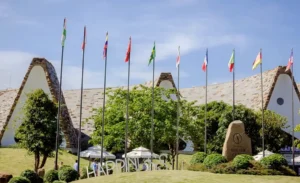 Nearly 3 km from Dak Lak Museum, the World Coffee Museum is a must-see attraction when coming to Buon Ma Thuot because of its unique architecture, which many tourists consider as “Western heaven” in the middle of the mountain town. The impressive exhibition space tells the story of coffee around the world.
Nearly 3 km from Dak Lak Museum, the World Coffee Museum is a must-see attraction when coming to Buon Ma Thuot because of its unique architecture, which many tourists consider as “Western heaven” in the middle of the mountain town. The impressive exhibition space tells the story of coffee around the world.
With a ticket price of 70,000 VND, the coffee museum not only brings you a lot of useful information but is also a place for young people to create countless photos in the style of contemporary art.
Location: Nguyen Dinh Chieu Street, Buon Me Thuot Ward.
Buon Ma Thuot Prison
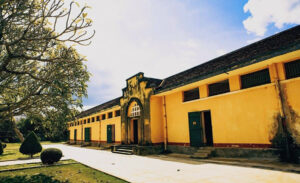 Buon Ma Thuot Prison was established and built by the French colonialists to exile and detain cadres and party members who were arrested and sentenced to heavy sentences in the Central provinces. The project covers an area of 2 hectares, with many items such as: detention house, management house, medical house, kitchen – dining room, education house, torture area, workshop, chapel, office area…
Buon Ma Thuot Prison was established and built by the French colonialists to exile and detain cadres and party members who were arrested and sentenced to heavy sentences in the Central provinces. The project covers an area of 2 hectares, with many items such as: detention house, management house, medical house, kitchen – dining room, education house, torture area, workshop, chapel, office area…
These projects were built and operated in 2 stages: 1931-1945 during the French colonial period and 1954-1975 during the resistance war against the US.
Address: 18 Tan Thuat, Buon Me Thuot Ward.
Phu Yen Museum
Located on 151 Tran Phu Street, Tuy Hoa Ward, currently, Phu Yen Museum is preserving 3,350 artifacts. The museum has a total area of 3 hectares, designed with 3 separate floors. The first floor of the building displays 415 artifacts which are archaeological sites of the prehistoric period of Phu Yen land including: Cham Pa cultural artifacts, Dai Viet culture. In addition, there are stone tools of Hoa Binh culture, stone instruments, stone trumpets, lotus-shaped stone pillars, Hamsa geese, linga, yoni of the Cham Pa fertility beliefs, Quang Duc ceramic products famous throughout the Central region in the late 18th – early 19th century along with ancient coins and bronze drums.
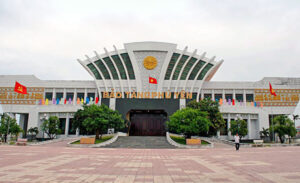 The second floor displays 433 artifacts from the revolutionary resistance period and 227 artifacts from modern life and ethnography such as: cards, gongs, drums urging tax payment, machetes, electric batons used by the enemy to torture innocent people, kerosene lamps, bicycles, hammocks, clothes, personal belongings of soldiers…
The second floor displays 433 artifacts from the revolutionary resistance period and 227 artifacts from modern life and ethnography such as: cards, gongs, drums urging tax payment, machetes, electric batons used by the enemy to torture innocent people, kerosene lamps, bicycles, hammocks, clothes, personal belongings of soldiers…
While the indoor display of the Museum currently has three main themes: ancient Phu Yen history, revolution and resistance, contemporary life, the outdoor display is large-scale artifacts, including 2 tanks, 2 planes and a cannon donated by the Ministry of National Defense.
Specialties of Dak Lak
Dak Lak maintains a rich culinary culture, the crystallization of the ethnic groups living here. Coming here, visitors will be able to enjoy a variety of delicious dishes such as:
Seafood
Tuna is a specialty you should not miss. Among them, tuna eyes stewed with Chinese herbs, tuna stomach salad and tuna wrapped in green cabbage are the most popular dishes because of their delicious taste and high nutritional value. Visitors can go to restaurants on Le Duan Street or Bach Dang embankment… to enjoy tuna eyes, priced at 40,000 VND per portion.
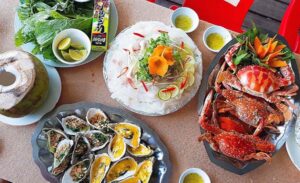
O Loan lagoon blood cockles are attractive thanks to their reddish-pink meat that can be processed into many dishes such as rare grilled, stir-fried with tamarind, steamed, made into salad… The most attractive of which is salt and pepper fried blood cockles. This dish has a sweet, slightly spicy and seductive aroma.
Oyster porridge is very popular with local people in old Phu Yen region. The way to make this dish is not too complicated. The oysters are stir-fried with onions, salt and pepper, then simmered with red rice and sticky rice. You should eat oyster porridge while it is still hot to fully experience the sweet aroma of the dish.
Steamed mackerel is served with rice paper, raw vegetables and spicy and sour dipping sauce or fish sauce. This dish has a natural sweetness, the fish meat is firm, fragrant with onions and typical spices.
Phu Yen chicken rice
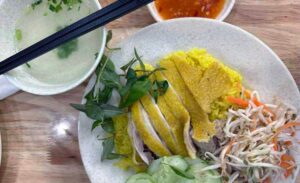 Phu Yen chicken rice is not as famous as Hoi An or Tam Ky but is still a specialty worth trying.
Phu Yen chicken rice is not as famous as Hoi An or Tam Ky but is still a specialty worth trying.
The chicken here is chewy, crispy, low in fat, golden and sweet. The accompanying vegetables include cucumber, pickled onions and pickles.
Suggested addresses are 189 Le Thanh Ton, 245 Le Trung Kien, 23 Phan Dinh Phung.
Thick noodle soup with garlic chive
Thick noodle soup with garlic chive has soft, chewy noodles, not crumbly, and is eaten with sea fish cakes. The highlight of the bowl of soup is the green garlic chives and the attractive aroma.
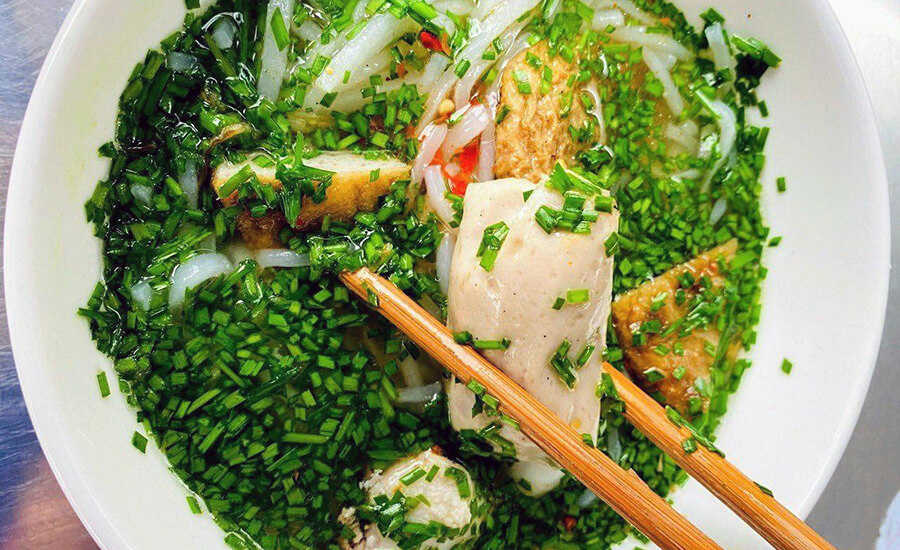
This dish is sold all day so you can easily find it. The suggested address is the noodle shop at the city post office at the intersection of Ngo Quyen and Tran Hung Dao.
Water fern cake
Water fern cake in Phu Yen is different from other places because it has a special aroma and chewiness. The cake is placed in small bowls, sprinkled with fried bread, pork floss and scallion oil on top.
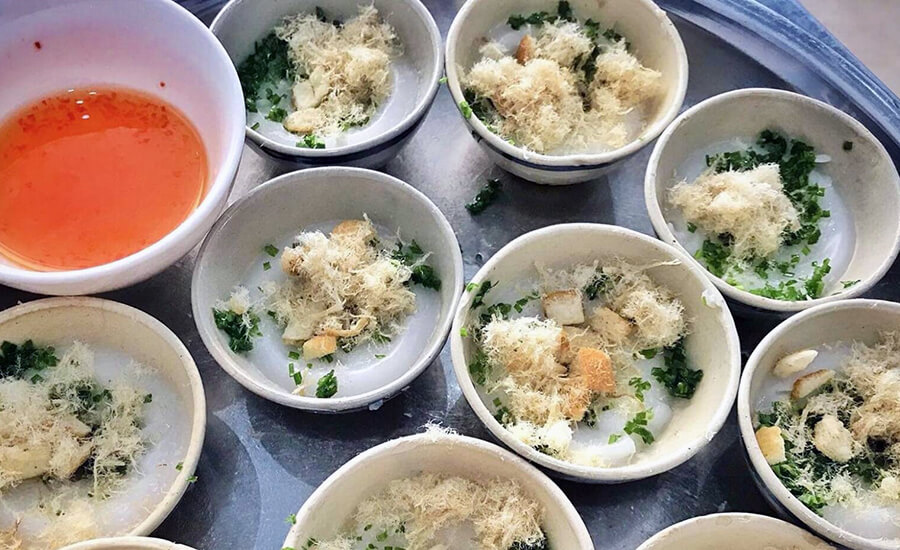
When eating, diners just need to add a little sweet and sour fish sauce, use a spoon to scoop up the hot cake and eat. The price of a tray of 8 to 10 bowls is about 10,000 to 15,000 VND.
Crispy pancake
Phu Yen crispy pancake are made in small molds, only as big as an open hand. Each time, visitors can eat several without getting bored.
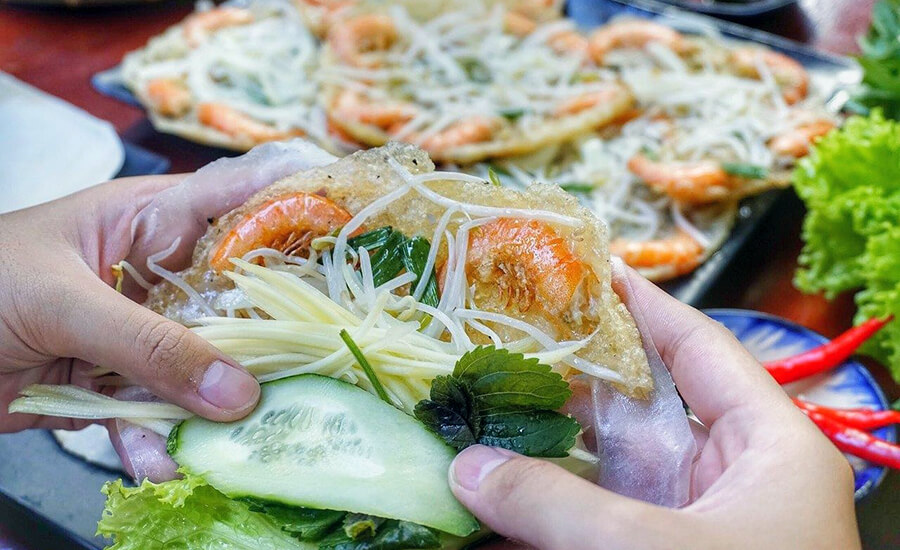
Phu Yen people often eat crispy pancake with rice paper and vegetables, dipped in sweet and sour fish sauce or fermented fish sauce.
What to buy as gifts
The famous Buon Ma Thuot coffee, fermented rice wine in a jar or specialties of the Central Highlands such as beef jerky, dried bamboo shoots, wild honey… are things to buy as gifts. In addition, there are unique wooden handicraft products that are quite beautiful.
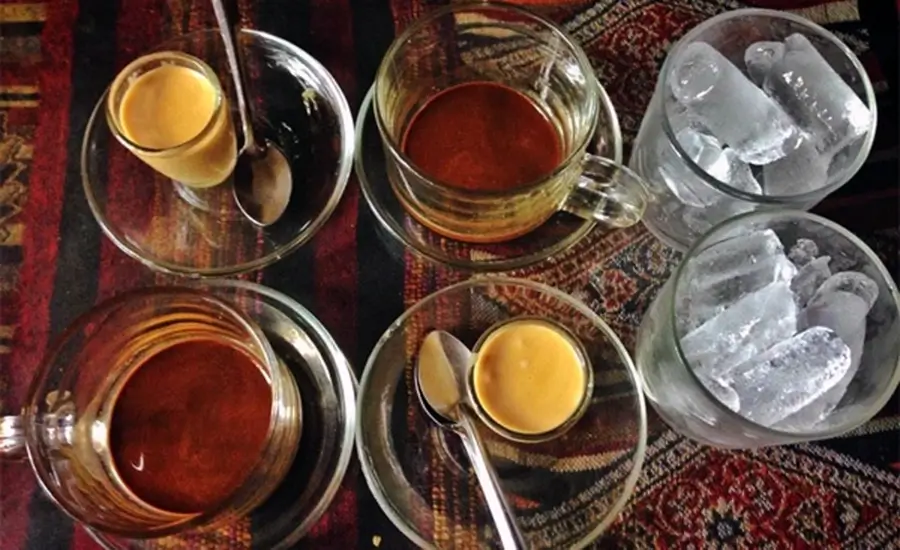
coffee Dak Lak
However, along coast line area, frozen seafood such as tuna eyes, tuna fillets, squid… are often chosen by tourists to be canned to take home. In addition, you can buy one-sun beef, rice paper, anchovy fish sauce or pre-packaged medicinal herbs to mix into refreshing summer drinks or handicraft products from snail shells as gifts for relatives and friends.
Source: collected by An
Follow us for the best deal with Vietnam package tours and visa services!
